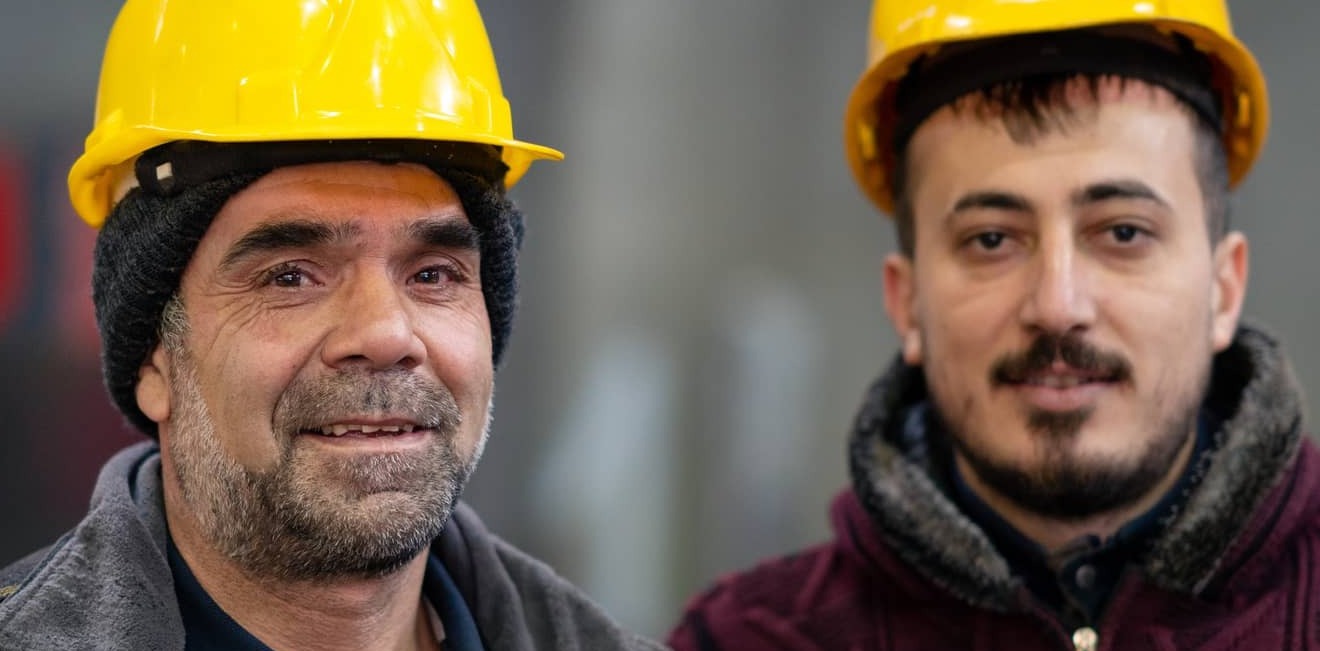Finding skilled tradespeople with the right experience and qualifications is still a considerable challenge in 2022.
An expanding industry and post-pandemic rebound increased the demand for electricians, plumbers, carpenters, and others who build, maintain, and repair the infrastructure that supports our entire economy; but with an aging workforce and lack of awareness of opportunities in the trades, the supply of skilled workers is falling short.
It’s not just shortages causing significant issues in skilled trades staffing–it’s what happens once a company does manage to hire workers for their projects. Let’s look at overcoming the major problems and find solutions so you can hire with confidence.
The Problems Facing Skilled Trades Staffing and How to Overcome Them
A manpower crisis in the middle of a project is a sure-fire way to miss deadlines and incur considerable costs to your company. Many problems can be avoided with pre-emptive measures and planning.
Here are the most common problems facing skilled trades staffing and how to overcome them.
#1. A Staffing Shortage
For the construction industry to keep pace with demand, HBI estimates that 740,000 new construction workers are needed each year for the next three years.
Here are some other statistics that provide contractors with hiring headaches and a huge opportunity to attract new blood to the trades.
- There are between 300,000 to 400,000 construction sector jobs open each month
- The U.S. construction industry is projected to grow by 15% in 2022
- 88% of contractors report moderate to high levels of difficulty finding skilled workers
There are many more statistics highlighting the current plight facing contractors and construction companies and how they lead to real-world setbacks in skilled trades staffing.
An Aging Workforce
A near-future problem is an aging workforce. The share of workers ages 55 and over is around 20% in construction. Over the coming years, a substantial portion of these skilled workers will retire, making it crucial to attract young talent to the industry.
Only 8% of construction workers are 20-24 years old. They don’t find the skilled trades attractive. Misconceptions surround safety, working conditions, and job security. Many young people have no awareness of skilled trades as a viable career.
There are also problems with trade schools. Many trade school teachers are retired professionals, but fewer professionals are retiring due to a shortage of workers in the industry.
Women in Construction
The number of women employed in the construction industry is growing–slowly. The critical challenge of the industry is a labor shortage, so attracting women to varying roles is a potential opportunity for the future.
Minorities in the Workforce
The Associated General Contractors of America recently launched a campaign to diversify its mostly white and male workforce. America’s workforce is evolving, and the construction sector must keep up.
Very few minorities enter the construction industry due to their lack of familiarity with it.
Solution: Innovative Practices to Attract New Talent
As America’s workforce evolves, there are opportunities for construction companies to focus on new ways to attract younger workers, minorities, and women.
Workplace Culture
Young workers want to feel valued, and developing an environment and culture where people feel like they can make a difference is essential. 83% of workers in the skilled trades are satisfied or happy in their careers, something that should be celebrated and young people thinking about where they want to work, made aware of.
Diversify
Diversify outreach to minorities and women. A low barrier to entry, decent wages, and a clear path to success open the door to the construction industry for anyone who displays the attributes needed. The critical qualities sought after by contractors focus on character and attitude.
As the Hispanic population is increasingly becoming involved in the trades, it's imperative to have Spanish-speaking internal employees within every function to serve the growing Spanish-speaking candidate pool of candidates. And, you may also have clients who may not speak the language.
Spanish-speaking tradespeople are certainly a key piece of the equation to solving the skilled labor force shortage over the next decade.
Awareness From a Young Age
The industry should work with parents, educators, and students as early as the middle school years to illustrate the promise of great jobs and careers in the trades without attending college. Reaching children who don’t want to go to college and don’t have a career path is crucial.
A Strong Outlook
The labor shortage can be seen as an opportunity to attract new workers to the trades. There is high job availability, and in a recent survey, respondents characterize the industry outlook as somewhat positive, a 23% increase from 2020.
#2. Lack of Training
Poorly trained workers are a hazard. Lack of training can lead to OSHA violations and fines and puts workers, contractors, and companies at risk.
In the long run, it costs more to hire the wrong person for the job, which leads to
- poor workmanship,
- project delays,
- lost revenue,
- and companies must go back to the drawing board to hire the right person.
Another consequence of the problems facing skilled trades staffing is that skilled tradespeople are made to do jobs they’re not trained or qualified for in desperation to fill a role. Skills are transferable, but not to the extent of putting workers in danger.
Many people don’t think they have the skills needed to perform the job and aren’t qualified to use the tools and equipment.
Solution: An Emphasis on Training
OSHA recommends that every employee undergo extensive training to follow compliance requirements and refresher courses regularly.
New procedures, equipment, and technologies are implemented regularly, so it’s crucial to stay up-to-date. The safer your worksite and the more safety-conscious your company is, the more valued your employees will feel.
Innovative, and more importantly, interactive training alleviates fears of being underqualified for the job and shows that your company is embracing technology and focuses on building a solid culture.
#3. The Job Isn’t What They Signed up for
Once a candidate accepts a job, the last thing you want is your employee feeling like they’ve been lied to about what the job entails. Some companies want workers on hand but make them do jobs they haven’t signed up for due to staff shortages and skills gaps.
But underqualified workers risk injury and death, and workers asked to do a job they’re not trained for or competent in might feel aggrieved and want to down tools.
It also creates a problem for skilled trades staffing agencies because they provide a complete and factual description of an advertised job. Loss of trust between candidates and agencies damages bench depth and reputations.
Solution: Transparent Recruitment
Work with staffing agencies that have a deep bench of qualified workers. You’ll find the skilled tradespeople you need for any project, position, and when you need them without needing to worry whether you have the right people for the job.
Staffing agencies focused on providing skilled trades ask the right questions to ensure not only highly-qualified candidates, but workers that are safety-conscious and team players.
#4. Substance Abuse
A job in construction is very challenging.
Construction workers often turn to marijuana and cocaine recreationally and become addicted to opioids after injury. Hazards in the workplace are rife, and accidents might happen because workers are intoxicated or medicated.
Skilled trades staffing agencies are vigilant around substance abuse considering the construction industry has nearly twice the rate of substance abuse as the national average, so it’s essential to have transparency throughout the recruitment process and clear policies within your company.
Solution: Clear Policies and Routine Drug Testing
Nobody likes the drug testing process, but routine drug testing is standard and usually driven by federal laws, company contract stipulations, and more. It’s a tricky subject to navigate and must start at the top level.
It’s crucial to make workers aware of your policies, but equally important to address the reasons they turn to drugs in the first place.
To ensure employees feel you take their health seriously, support them by directing them to substance abuse resources if you see fit.
#5. The Aging Workforce and Technology
As mentioned above, part of the labor gap and skilled worker shortage stems from older workers retiring and fewer young people entering the skilled trades.
Older workers are less likely to embrace technology, but younger workers prefer new technology, so there’s a gap. Also, the construction sector has been slow to adopt technology-based systems for effective management and team member satisfaction.
Solution: An Opportunity
People are your most valuable asset. They want to be engaged, to be able to do as much as they can online, and to feel like your company is moving forward. It’s time to embrace new technology.
Your job is to keep workers informed, safe, and responsive. Paper is unnecessary, and spreadsheets are tired, highlighting the need to move to cloud-based communication and employee portals.
Skilled Trades Staffing Agencies Share the Load
It might be challenging to hire skilled tradespeople in an industry that continues to outgrow its aging workforce. Still, the right skilled trades staffing agency is proactively creating a deep bench of skilled, qualified tradespeople who are worksite ready.
Reach out today and avoid a crisis by exploring a new path to a deeper bench.



